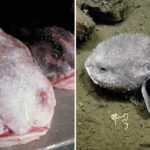If you thought that India is a land of snake charmers and maharajas, you may want to think over this again. India is also the land of the mysterious Roopkund Lake, which is also known as the Skeleton Lake. This natural water body is located at a height of 5029 meters in the Himalayan range of mountains. What makes this lake earn the eerie name for itself is the presence of submerged human skeletons that become visible once the ice melts during the summer. While theories are there, but no one knows for sure where these skeletons came from, which keeps the whole thing wrapped in folds of mystery. Here are top 10 Mysteries of the skeleton lake in India.

(1) There are more than 300 skeletons in the lake’s water. Studies have proved that although all of them date back to the 9th

(2) Although they were thought to be skeletons of local tribesmen, not all the skeletons are similar in terms of height and genetic build-up.

(3) There is a theory which suggests that most of the skeletons were from Iranian descent while some belonged to the local tribesmen. This gives birth to the mystery that why would so many immigrants from Iran come and meet local Indians in the secluded part of the Himalayas.

(4) The most unraveling mystery that is associated with the skeletons of the Roopkund Lake is that why would so many people die at the same place at the same time. The most prominent theory against this is that they might have been caught in a hailstorm and died after getting hit by the hail.

(5) There are no signs of any wound from weapons on the skeletal remains that are found in the Skeleton Lake. All that is found is injury marks on the back of their heads as if they were hit by something blunt.

(6) The place where the Lake is does not fall en route any of the trade routes of that era. The question that triggers the mystery is that why would so many people go to that part of the Himalayas.

(7) A very prominent theory about this point is that they were pilgrims who were going for the Nanda Devi Raj Jat pilgrimage. However, what remains unanswered is that if it was the group of pilgrims, why would wooden artifacts and iron spearheads be found alongside the skeletons. Indian pilgrims never carried weapons with them while going to pay a visit to the gods.

(8) Another theory suggests that the skeletons could have been the mortal remains of Indians who committed mass suicide. If this theory was to be believed, what would remain unanswered is that why would people choose that part of the Himalayas to commit the mass suicide.

(9) Some of the skeletons have flesh attached to them even now. While it is known that human bodies decay very slowly in such cold temperatures, but these skeletons are almost 1,200 years old! If flesh from the other skeletons got decayed over the centuries, why would some of them still remain?

(10) The presence of certain jewelry items point to the probability that the skeletons are probably that of King Jasdhaval and his pregnant wife Balampa who might have been on their way to Nanda Devi Raj Jat pilgrimage. Like the other ones, there is no certainty of this theory as well.









